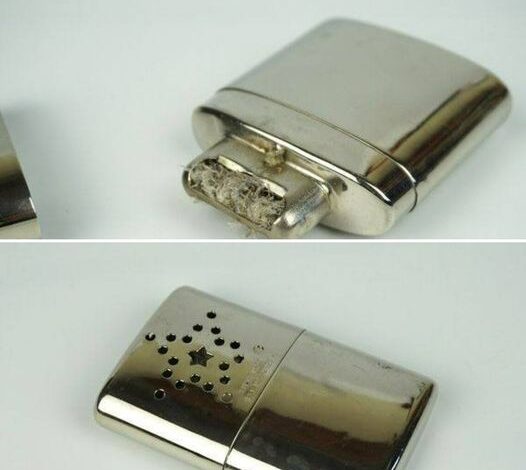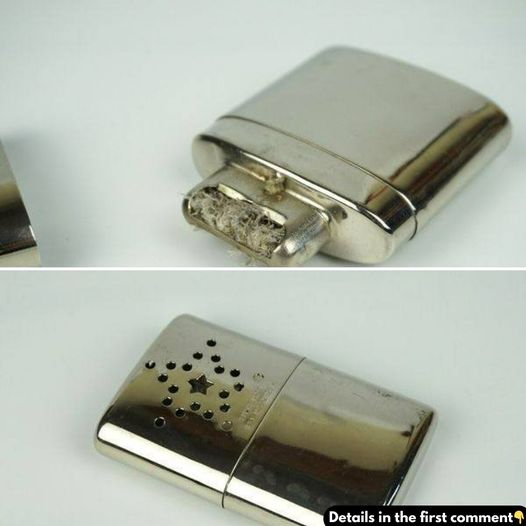What is this? Exploring Their Practicality, History, and Timeless Appeal.

Hand warmers have a surprisingly rich history that spans centuries, evolving from simple, functional devices to sophisticated items cherished by collectors today. These small yet mighty tools have played a crucial role in human history, offering warmth in cold weather and reflecting the technological advancements of their time. Let’s take a closer look at how hand warmers have developed, their uses, and why they continue to hold such cultural and historical significance.

A Warming Tradition: The Origins of Hand Warmers
The concept of carrying portable heat traces back to ancient times. In regions such as China and Japan, early versions of hand warmers were developed to combat the cold. These early devices were often small braziers, typically made of metal or clay, filled with hot coals. Imagine carrying a mini furnace in your pocket—primitive yet effective in keeping the chill at bay.
This idea of portable heat was incredibly practical, offering a solution for people to carry warmth wherever they went. These early hand warmers provided more than comfort; they were a testament to human ingenuity in solving everyday challenges.
The Rise of Metal Hand Warmers: A Design Revolution
By the late 19th and early 20th centuries, metal hand warmers had gained widespread popularity, particularly in colder climates. Made from durable materials like brass or steel, these warmers were designed to radiate heat through perforated casings. Inside, charcoal or solid fuel sticks would burn slowly, providing steady warmth for hours.
These metal warmers weren’t just practical—they were also elegant in their design, often becoming stylish accessories. As industrial advancements took hold, hand warmers became more efficient and safer to use, reflecting the era’s technological progress.
A Game-Changer: Catalytic Hand Warmers
The 1920s brought about a significant innovation in the world of hand warmers: catalytic technology. Catalytic hand warmers used platinum to generate heat without the need for an open flame, making them safer and more reliable. This development was particularly beneficial for soldiers, campers, and outdoor enthusiasts who needed warmth in extreme conditions.
Brands like Zippo and Jon-e quickly became synonymous with high-quality catalytic hand warmers. Today, vintage models from these brands are prized by collectors, not just for their craftsmanship but for their place in history.
Everyday Use: Keeping Warm in Cold Climates
For those living in frigid environments, hand warmers were more than just a luxury—they were a necessity. Whether commuting to work, attending outdoor events, or spending time outside during the winter months, these small devices provided essential warmth. Using them was a simple process: light the fuel, place it in the warmer, and carry it in your pocket or gloves. This straightforward ritual ensured that even in the coldest weather, people could stay comfortable.
Hand Warmers in the Military: A Vital Tool for Survival
During the brutal winters of World War I and World War II, hand warmers became crucial tools for soldiers stationed in freezing environments. These warmers allowed soldiers to maintain dexterity, crucial for handling weapons and performing tasks. In war, staying warm wasn’t just about comfort—it could be a matter of survival. The ability to keep hands warm enabled soldiers to remain effective in harsh conditions, highlighting the life-saving importance of hand warmers during this time.
Collecting History: The Enduring Legacy of Vintage Hand Warmers
Today, vintage hand warmers are highly sought after by collectors. These devices, with their unique designs and historical significance, offer more than just warmth—they tell a story. Each hand warmer represents a piece of history, offering a tangible connection to the past. Collectors value them not only for their functionality but also for the craftsmanship and stories they carry.
Sustainability and Hand Warmers: A Lesson in Durability
In today’s world of disposable items, vintage hand warmers stand out as symbols of long-lasting, sustainable design. Many of these warmers were built to last, using renewable fuel sources and sturdy materials. Their enduring appeal encourages us to think about sustainability in our own lives, reminding us of a time when people valued durable, reusable tools over throwaway alternatives.
Cultural Significance Across the Globe
Hand warmers are not just practical devices; they hold cultural significance in various parts of the world. For example, in Japan, traditional kairo hand warmers are still used today as part of winter rituals. These hand warmers serve as symbols of resilience against the cold and connect generations through shared cultural practices.
The Timeless Appeal of Hand Warmers
More than just functional items, vintage hand warmers represent human creativity and adaptability. Their history reflects both technological progress and cultural evolution, while their continued popularity speaks to their timeless charm. Whether used for practical purposes or collected as artifacts, these devices remain beloved companions, offering warmth and comfort when it’s needed most.
A Warm Reflection on History
As we reflect on the history of hand warmers, it’s clear that these devices have played an important role in human survival and comfort. From ancient braziers to catalytic innovations, they’ve evolved with society’s needs, and their legacy continues to warm our hands—and our hearts. So the next time you feel a chill in the air, think of the rich history behind these simple yet endu